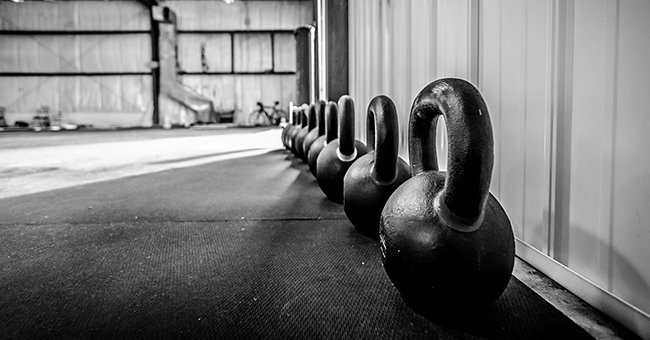Good morning everyone and once again, Happy Thursday. I hope you all have had a good week and enjoyed Tuesday’s snow day. Now it’s back to work and back to fitness!
I’m not sure what was in the air this week, maybe it was the snow storm, but it seemed like everywhere I turned I saw people doing kettlebell swings. And while some were doing them correctly, most, unfortunately, were not.
So today, in honor of one of my favorite exercises, I want to talk about kettlebell swings, what muscles they work, what attributes they develop, what goals they are good for, and how to do them. Next week, I’ll cover the primary mistakes I see people make with kettlebell swings and how to fix them.
Okay, and we’re off!
What is a Kettlebell Swing?
The kettlebell swing is, I believe it is fair to say, the kettlebell’s signature exercise, and certainly it’s most well known. In addition, the swing is also a key foundational exercise upon which many other kettlebell movements and exercises are based.
What do you do during a kettlebell swing?
During a kettlebell swing you essentially swing your kettlebell back and forth from between your legs to up in front of you and back down again. Sounds straight forward right…? Trust me, it’s not.
What muscles do the kettlebell swings work?
The primary muscles the kettlebell swing works are your hamstrings (back of your legs), glute (butt) muscles, and your lower back. Swings are also very good for your hips, abdominals and obliques (sides.)
What attributes do kettlebell swings develop?
While swings will develop some hypertrophy (build muscle) in the muscles they work (primarily your hamstrings and glutes) kettlebell swings are used primarily to develop explosive power and improve short distance high threshold cardiovascular conditioning.
What types of fitness goals are kettlebell swings good for?
To translate the above sentence into English, I wouldn’t recommend swings for someone who’s primary objective is to maximize building muscle, but swings are great for those, especially women, looking to “tone up,” for athletes looking to increase their performance & for individuals looking to improve their cardiovascular conditioning or lose weight.
Proper Kettlebell form and execution.
Before I outline proper form and execution, I want to explain that directly below this paragraph I’ve included four links to YouTube videos I recorded of me properly executing a kettlebell swing. I highly recommend using these videos for visual references as you read through the following instructions. The first video is a front shot recorded at full speed. The second video is a side shot recorded at full speed. The third video is a front shot recorded in slow motion. And the fourth video is a side shot recorded in slow motion.
Full speed front shot:
Slow motion front shot:
Full speed side shot:
Slow motion side shot:
Right off the bat, the key point to understand about the kettlebell swing, and the point that the vast majority of people who do the swing incorrectly get wrong, is that the swing is a fast, explosive, and powerful movement.
It is not a slow or moderately paced exercise such as traditional weight lifting exercises.
This is vital to understand because if you do not perform your swing quickly and explosively you will use the wrong muscles, put yourself at risk of an injury, and fail to develop the physical skill set the swing is intended to develop.
And before we go any further I want to point out a very important side note… if you cannot deadlift correctly, you cannot swing correctly.
Why?
Because the swing movement is essentially an explosive high waist deadlift. If you are unable to deadlift with proper form, keeping your back straight and loading your hamstrings, your risk for injuring yourself, especially your back, while swinging is extremely high.
Proper Execution:
The Preparation Phase:
Step 1: Position yourself so that the kettlebell is between your feet with your feet a little more than shoulders width apart.
Step 2: Bend down using a deadlift motion so that your back is now straight and your hamstrings are loaded and reach your hands down to the kettlebell handle while straightening and locking your arms and tightening your lat muscles.
The Ascent Phase:
Step 1: To start your swing, quickly hike the kettlebell up between your legs so it is off the ground and about 6 – 9 inches further back than where it was when it was on the ground.
Step 2: Once the kettlebell has reached its furthest back position, immediately begin to thrust your hips forward, contracting your hamstrings and glutes and driving the kettlebell forward.
*While you do this, you must keep your lower back straight and strong. Do not round your lower back.
Step 3: Drive the kettlebell forward until the kettlebell is level with your chest.
At this position your lats must still be tight, and you must squeeze your abs, glutes, and quad muscles. Doing this will “lock” your body out and is the proper way to finish the ascent phase of your swing.
The Descent Phase
At the very top of the swing, the kettlebell will hover momentarily; once this moment has passed you’ll need to give the kettlebell a slight pull downward to get it moving downward with enough speed. Do this by pulling downward with your lat muscles the same way as you would do in a straight arm lat pull down exercise.
As the kettlebell descends, you need to quickly lower your chest and drive your hips backward, just as you would in a high waist deadlift. You must keep your lower back straight and upper back and lats tight.
Let the kettlebell continue to descend until it passes through your legs. As it does, keep the kettlebell high and tucked up near your inner thighs.
Let the kettlebell swing up until it reaches behind your legs and raises slightly upwards toward your butt.
From here, restart the ascent phase, driving your hips forward, contracting your hamstrings and glutes, and doing so with maximum speed and power.
And there you have it, the proper way to execute a kettlebell swing.
Okay everyone, I’m going to cut it here for today. Next week I’m going to cover the main mistakes I see with the swing and how to correct them.
As always, until next time and to our health!
Zach





